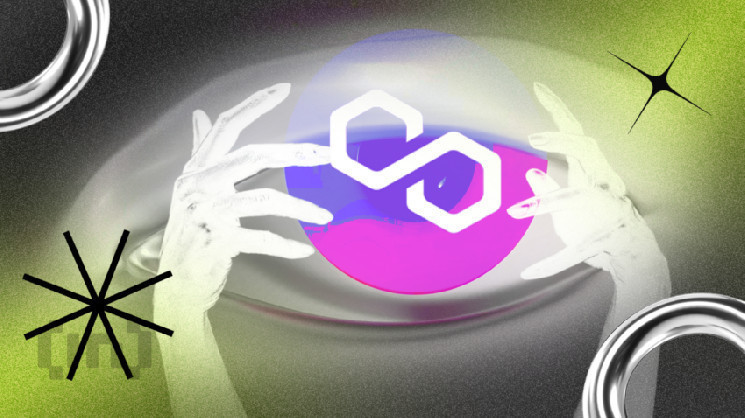Title: Examining the Viability of Polygon (MATIC) Amid Ethereum’s Shift to Proof of Stake
Introduction
Polygon (MATIC) has gained significant traction in recent years as a Layer 2 scaling solution for Ethereum, offering faster transactions and lower fees than the Ethereum main chain. However, Ethereum’s transition from Proof of Work (PoW) to Proof of Stake (PoS) through the upcoming Ethereum 2.0 raises the question of whether Polygon will maintain its importance in this new landscape. This article will explore how Polygon stands to fare against the changes in the Ethereum ecosystem and examine various factors that may impact its sustainability and growth.
Understanding Polygon’s Ecosystem
Polygon, formerly known as Matic Network, positions itself as a protocol and a framework for building and connecting Ethereum-compatible blockchain networks. By doing so, it aims to solve the scaling and usability issues inherently persisting on Ethereum while not compromising on security. The Polygon ecosystem can be best described by the following features:
1. Layer 2 Scaling Solutions: Layer 2 scaling solutions, such as Plasma, Optimistic Rollups, zkRollups, and Validium, are implemented to increase confirmation speed and reduce transaction costs by moving most transactions off the main Ethereum chain onto a secondary layer or sidechain. Polygon, particularly utilizing the Plasma framework, allows for thousands of transactions per second and is an attractive option for developers.
2. Interoperability: Polygon is a multi-chain network, meaning it supports a multitude of Ethereum-compatible chains with diverse consensus mechanisms, providing developers an enormous range of options for structuring their decentralized applications (dApps).
3. Security as a Service: Polygon provides a shared security model, in which projects can choose to inherit the security of the main chain. Alternatively, they can opt for a more independent route, where the POSe (Proof of Stake and Delegation) consensus is followed to achieve scalability, speed, and flexibility.
4. Developer Comfort: The compatibility between Ethereum and Polygon allows developers to continue using the Ethereum developer toolkit and environment to build and deploy dApps on Polygon. This compatibility reduces friction for developers looking to scale their Ethereum-based applications on Polygon.
Impact of Ethereum’s Transition to PoS
The Ethereum ecosystem is currently undergoing its most significant overhaul since its inception, with the transition to Ethereum 2.0 featuring PoS to replace the existing PoW consensus mechanism. This change represents a crucial milestone in Ethereum’s development, bringing anticipated improvements in energy efficiency, scalability, security, and transaction speed. The shift to PoS is expected to impact the whole Ethereum ecosystem and, consequently, Polygon in various ways:
1. Increased Competition: As Ethereum transitions to PoS, it becomes more scalable with the introduction of sharding. This change will reduce the demand for Layer 2 solutions like Polygon. Additionally, Ethereum 2.0 facilitates the rise of other Layer 2 scaling solutions such as Optimistic Rollups and zkRollups, potentially leaving Polygon in a competitive landscape.
2. Performance Enhancements: While the PoS-powered Ethereum 2.0 ecosystem will undoubtedly be faster, more scalable, and energy-efficient than its predecessor, it is unclear whether it will match Polygon’s scaling capabilities. Today, Polygon can achieve transaction throughput in the order of thousands of transactions per second, which might still outperform Ethereum’s PoS-based scaling enhancements.
3. Adoption and Market Penetration: The Layer 2 scaling solutions market is rapidly expanding, with multiple contenders competing for adoption and market share. For Polygon to maintain its competitive advantage, it must continue to innovate and attract new projects to its platform. The success of Polygon will primarily depend on its ability to capitalize on its current market presence.
4. Security Concerns and Decentralization: Decentralization is an essential component of blockchain technology, ensuring that no central authority holds power over the ecosystem. Although Ethereum 2.0’s PoS transition promises improved security and overall consensus, its decentralization could decrease, opening it to potential vulnerabilities. Polygon’s scaling framework, which relies on different security mechanisms, must ensure that these concerns are carefully and adequately addressed.
Conclusion
The future of Polygon (MATIC) amid Ethereum’s transition to Proof of Stake primarily depends on its ability to continually innovate and maintain a competitive edge in a rapidly evolving ecosystem. While Ethereum 2.0 presents new opportunities and challenges for Layer 2 scaling solutions, Polygon has the potential to maintain its position and thrive by capitalizing on its unique offerings and integration with the Ethereum ecosystem. Additionally, the growing demand for interoperability in the blockchain space could bolster Polygon’s relevance and utility even as Ethereum transitions to a PoS-based infrastructure. Ultimately, Polygon’s viability will be determined by its ability to evolve in tandem with the rapidly changing Ethereum ecosystem and the broader blockchain landscape.


